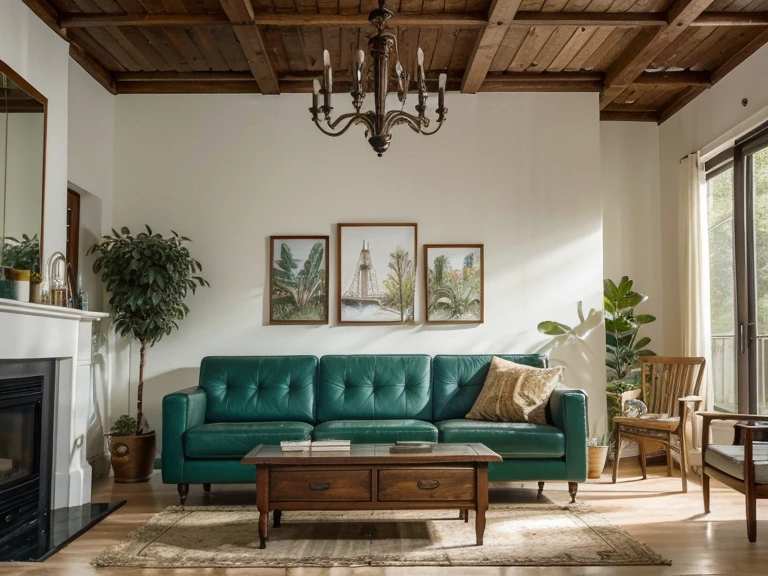

Welcome to a world where style meets sustainability! In this guide, we'll explore the art of creating a chic and eco-friendly interior that not only looks good but also feels good for the planet. Let's dive into the key elements of Sustainable Chic.

As interior designers and homeowners become more eco-conscious, sustainable design principles are at the forefront. Your interior design choices affect both the environment and your family’s health and wellbeing. That’s why more people are opting for eco-friendly and non-toxic furnishings and décor.
Sustainable interiors aim to have a positive environmental impact by:
Beyond benefits to the planet, green design also enhances people’s health and wellness. The EPA estimates we spend 90% of lives indoors, so it’s pivotal our living spaces promote health rather than compromise it.
Sustainable building materials like wool and linen absorb better acoustically. Natural light and ventilation lower contaminants. Non-toxic paint avoids nasty VOC off-gassing. Thoughtful material and layout choices make interiors safe sanctuaries.
Using sustainable finishing materials sets the foundation for any green interior design project. Here are some of the best options to embrace:
Before buying brand new, check out antique shops, used furniture outlets and online classifieds for secondhand steals. Repurposed wood, metal and glass pieces make unique statement furnishings. Upcycling materials headed for the landfill, like old pallets or packaging crates, also keeps waste out of landfills.
Swap conventional cotton and polyester for organic-certified, sustainably harvested fibers like bamboo, hemp, wool, and Tencel. Fair Trade Certified vendors ensure no dangerous chemicals get used growing or processing fabrics. Hand woven, naturally-dyed textiles connect people to traditional craft. Regenerative farming revitalizes soil health for future generations.
Opt for FSC-certified lumber from responsible forestry operations. Common green woods include oak, maple, birch and pine. For a contemporary look, bamboo offers durability resembling hardwoods but with faster regrowth cycles. Reclaimed barn wood makes charming accent walls, featuring beautiful patinas from prior lives.
Carpeting and vinyl release concerning chemicals, especially when new. Instead, choose natural linoleum, cork, bamboo or salvaged wood floors. Durable green flooring options include concrete, tile and stone sourced close to your project site. Check out Marmoleum for designer styles resembling wood and stone but from natural linseed oil and recycled wood flour.
Standard latex paints emit VOCs, linked to poor health and air quality. Safer options include milk, clay and mineral-based paints with fewer chemicals. Top picks for low-VOC and zero-VOC paint brands include AFM, ECOS, and Mythic. For wood finishes, try food-safe tung, citrus and linseed oils offering durability without off-gassing.
Beyond material selections, integrating systems and technologies to conserve resources also defines sustainable interiors:
Programmable thermostats, automated blinds and smart lighting keep conditions comfortable while optimizing electricity and heating fuel. Smart sensors detect room occupancy so you don’t heat or cool unused spaces. Tie systems together on one control panel or phone app for easy access.
When upgrading climate control systems, emphasize energy efficiency with Energy Star rated units. Consider electric heat pumps offering both cooling and heating from one system. Tankless water heaters save money by only heating water upon demand rather than storing.
Low-flow showerheads and faucet aerators curb water volumes by 25-60% without compromising water pressure. Dual-flush toilets use 60% less water per flush. Look for WaterSense labeled models vetted for high performance.
Strategically placed windows draw in ample natural light and passive solar warmth. Operable windows encourage natural ventilation. Open floorplans keep air circulating fully. Consider skylights, sun tunnels, and light shelves to pull light deep into rooms.
Sustainable interior design seeks to lower environmental impacts through conscientious material usage and carbon footprint reduction. Projects should aim for net zero waste wherever possible.
Plan ahead and buy only what is essential for the project. Order materials cut-to-size or in standard dimensions to prevent leftover scrap waste. Use leftover paints, trims and tiles in future decor projects rather than tossing.
At project completion, ensure contractors follow safe hazardous waste disposal protocols. Sort metal, wood, glass and other construction debris for recycling collection services rather than sending to the landfill.
Source as many finishing materials as possible from local suppliers to reduce transportation emissions. Salvage materials from site demolition for creative reuse opportunities. Check out antique and architectural salvage shops for doors, lighting and other elements ripe for reimagining.
Counterbalance the carbon emissions affiliated with your design project with eco-friendly community initiatives. Plant trees locally to grow a greenspace. Sponsor recycling bins for a neighborhood park. Commit to beach or river clean-ups. Look for certified carbon offset programs funding renewable energy or reforestation globally as well.
You need not sacrifice good design for sustainability. Many environmentally-preferable products now cost the same as conventional options. Shift mindsets and you can likely reallocate spending to greener finishes rather than increasing project budgets.
TEL : (+66) 0846590444
Email : sales@interiorbangkok.com
เวลาทำการ:
วันจันทร์ – วันศุกร์ เวลา 08.00 – 18.00 น
Our Partner:
Bangkok Design Esclusivo
Head office : 463/81 Luk Luang Road, Mahanak Intersection, Dusit, Bangkok 10300
Tawan Kiddee Construction : 161 Sukhumvit 56, Bang Chak, Prakanong Tai 10260
C&Y Design – Jinyun road huatai center 12C# 5FShanghai jiading district. Chaina

Copyright © 2023 Bangkok Design Eslusivo - All Rights Reserved